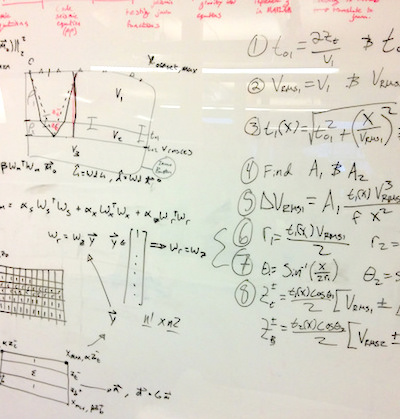A European geo-gaming hackathon
/I'm convinced that hackathons are the best way to get geoscientists and engineers inventing and collaborating in new ways. They are better for learning than courses. They are better for networking than parties. And they nearly always have tacos!
If you are unsure what a hackathon is, or why I'm so enthusiastic about them, you can read my November article in the Recorder (Hall 2015, CSEG Recorder, vol 40, no 9).
The next hackathon will be 28 and 29 May in Vienna, Austria — right before the EAGE Conference and Exhibition. You can sign up right now! Please get it in your calendar and pass it along.
Throwing down the gauntlet
Colorado School of Mines has dominated the student showing at the last 2 autumn hackathons. I know there are plenty more creative research groups out there. Come out and show the world your awesomeness — in teams of up to 4 people — and spend a weekend learning and coding. Also: there will be beer.
To everyone else: this is not a student event, it's for everyone. Most of the participants in the past have been professionals, but the more diverse it is, the more we all get out of it. So don't ask yourself if you'll fit in — you will.
A word about the fee
Our previous hackathons have been free, but this one has a small fee. It's an experiment. Like most free events, no-shows are a challenge; I'm hoping the fee reduces the problem. If the fee makes it difficult for you to join us, please get in touch — I do not want it to be a barrier.
Just to be clear: these events do not make money. Previous events have been generously sponsored — and that's the only way they can happen. We need support for this one too: if you're a champion of creativity in science and want to support this event, you can find me at matt@agilegeoscience.com, or you can read more about sponsorship here.
Details
The dates are 28 and 29 May. The event will run 8 till 6 (or so) on both the Saturday and the Sunday. We don't have a venue finalized yet. Ideas and contributions of any kind are welcome — this is a community event.
The theme this year will be Games. If you have ideas, share them in the comments! Here are some random project ideas to get you going...
- Acquisition optimizer: lay out the best geometry to image the geology.
- Human inversion: add geological layers to match a seismic trace.
- Drill wells on a budget to make the optimal map of an unseen surface.
- Which geological section matches the (noisy) seismic section?
- Top Trumps for global 3D seismic surveys, with data scraped from press releases.
- Set up the best processing flow based for a modeled, noisy shot gather.
It's going to be fun! If you're traveling to EAGE this year, I hope we see you there!
Photo of Vienna by Nic Piégsa, CC-BY. Photo of bridge by Dragan Brankovic, CC-BY.





































 Except where noted, this content is licensed
Except where noted, this content is licensed